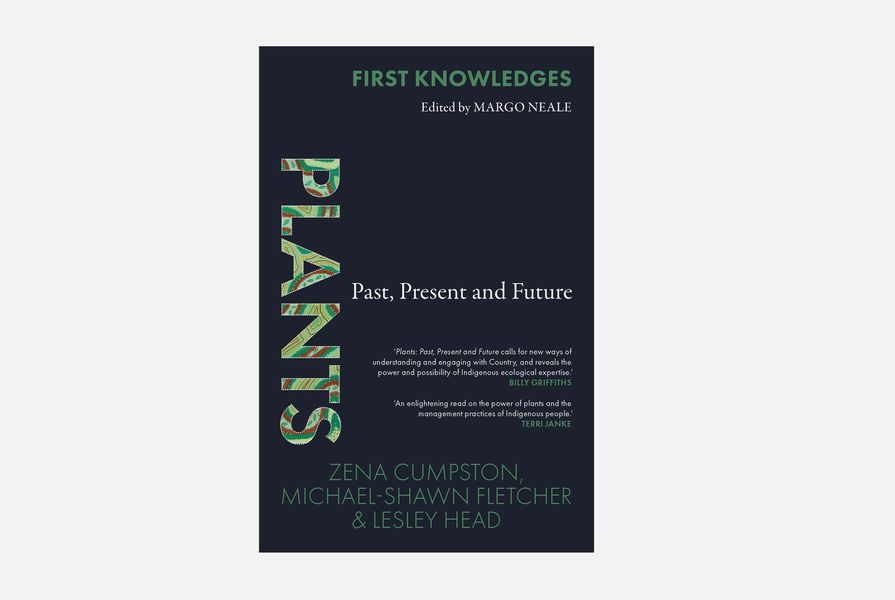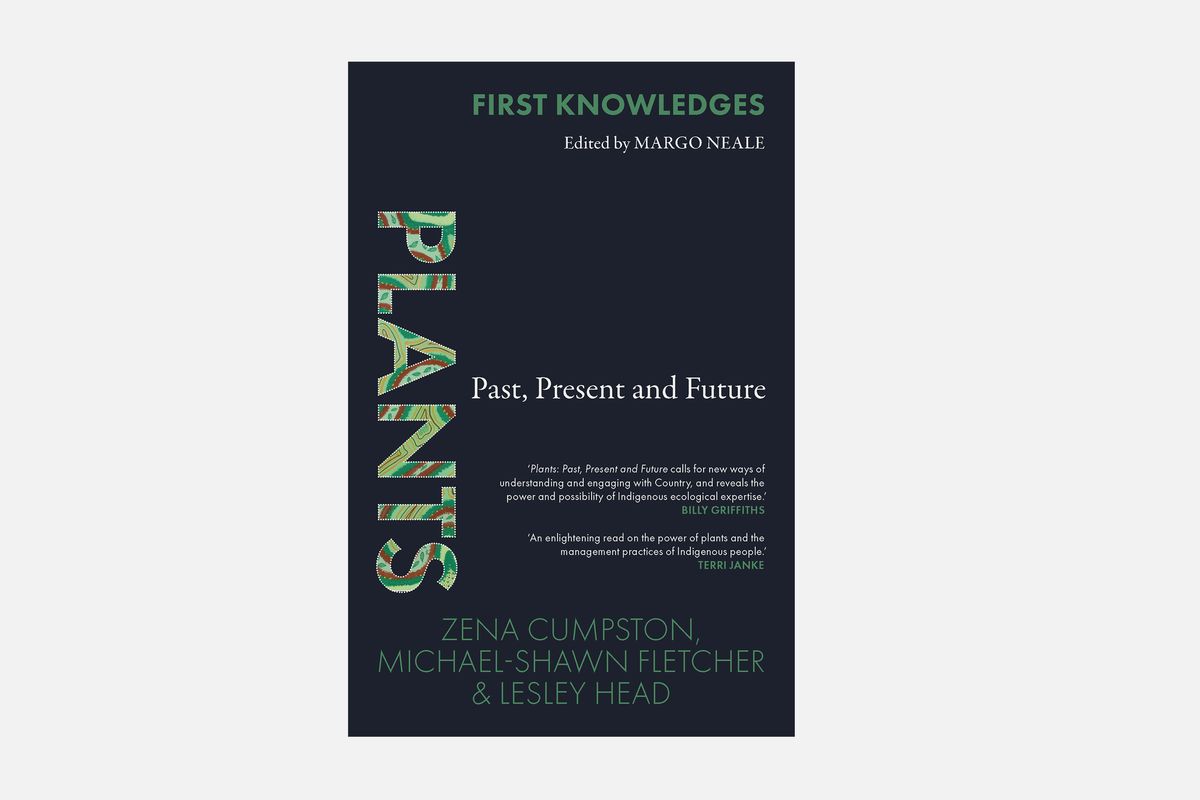Plants: Past, Present and Future is the latest offering in the remarkable “First Knowledges” series edited by Margo Neale. As the title suggests, the book positions plants in relation to deep time, then further explores them in the context of contemporary Australian spatial, social and cultural relationships. The writers present ways of thinking about plants that will be of great value to those of us in the landscape architecture profession. Moving beyond the framing of plants as constituent elements of either gardens or nature, the book powerfully demonstrates what landscape architects can (and should) learn from First Nations people – and how this knowledge can help us effectively engage in and provide leadership on landscape issues at a national scale.
The book’s authors – Zena Cumpston, Michael-Shawn Fletcher and Lesley Head – first provide their personal perspectives. These wonderfully illuminating vignettes position their lives relative to plants through time, family, practice and larger social and cultural concerns. Fletcher then takes us on a deep dive into the Bolin Bolin story from a broad geographical perspective. The Bolin Bolin Billabong was a seasonal gathering place of Wurundjeri people for millenia in what is now Melbourne – it was severely degraded as a result of colonization and the “development” which followed. This is followed by Cumpston and Head guiding us on a journey through the stories of several individual plant species. To conclude, Cumpston provides a wonderfully precise manifesto for engaging with “native” plants and “bush foods” in ways that respect the knowledge (both about and, importantly, in these plants) of Australia’s First Peoples through Country before joining Head for an abundantly optimistic look at the future.
In unpacking the Bolin Bolin story, Fletcher positions the condition of the billabong in the twentieth-century as a manifestation of a broader epistemology grounded in the totalising assumptions of Western knowledge systems in regards to development and environmental control. Another such manifestation is, as Fletcher says, “intellectual white men who think they know more about us [Indigenous knowledge holders] than we [Indigneous knowledge holders] do … [and] recycling the myths that lie at the foundations of modern Australia.” This is a powerful message for those of us practicing in and on Country, to which we are still being invited into relationship – and which has long been cared for by knowledge holders whose system intrinsically relates to it. While our profession’s approach is already changing for the better, we must accelerate this change and reconsider the old western tropes, archetypes and shibboleths of “nature,” “garden” and “solution” through a methodology that includes and embraces First Peoples’ knowledge. As Fletcher demonstrates through his unpacking of the Bolin Bolin story, this will require rethinking old hierarchies. Rather than assuming the relevance or “rightness” of Western scientific knowledge in our practices, we can look to Indigenous knowledge holders for Country-specific guidance. We might begin to acknowledge Indigenous knowledge as affirming and validating western scientific knowledge rather than the broadly assumed inverse.
Cumpston draws on the reservoir of Barkandji knowledge passed on to her through Uncle Badger Bates and Sarah Martin to explore the notion of abundance in and through Indigenous knowledge. Using a photograph taken around 1879 by Frederic Bonney at Momba Station on Barkandji Country in western New South Wales and documented by Jeanette Hope, Cumpston provides a powerful explanation of the interrelationships between First Nations Peoples’ environment and the material of their lives. This process provides a lived example of the ways in which the abundance available through such interrelationships is a material manifestation of Country; the underlying principles, Cumpston demonstrates, apply equally in contemporary and urban settings.
Using five plant species as case studies, Head and Cumpston then work through some of the themes touched on above. The notion of the “weed” is addressed through a section on the aquatic plant cumbungi; the writers note that the species’ weed status (entirely derived from western scientific knowledge) is inverted when viewed and treated through the lens of Country to become a valuable commodity with inherently useful characteristics. Similarly, the virtues of yams and spinifex are explored, both having been historically overlooked by western agricultural and land practices and now having their positive traits understood through the lens of Country. The material relationships between human life and plants are again highlighted, this time through the traditional methods (and contemporary applications) of producing and handling quandongs. The point is well made that these and many other species are extraordinarily suited to the climates in which they have evolved. The case for their preservation and regeneration is furthered in their “biocultural history … their connection to Indigenous practices spanning millennia and their wellbeing reflects the human interactions that have fostered their growth.”
This book prompts us to revise much of landscape architecture’s discourse on plants and planting in favour of a carefully mediated approach to the future. It calls for a shift toward a Country-centred practice – a practice that affirms “the opportunity our plants offer and the breadth of knowledge behind their applications … ” without perpetuating “obscuring narratives that do not allow us to see complexity and abundance … .” Such a practice would necessarily embrace the ways that indigenous plants are used as embodying elements of Country in the public realm as well as in agriculture. After all, as Cumpston and Fletcher wisely note: “When you look after Country, your mother, she will look after you. It is not too late.”












